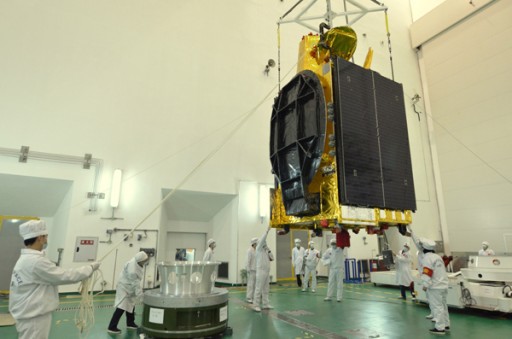Túpac Katari 1

The Túpac Katari 1 satellite, also known as TKSat-1 is Bolivia’s first communications satellite.
The spacecraft was built by the China Academy of Space Technology (CAST) while the China Academy of Launch Vehicle Technology (CALT) provided the CZ-3B/E launcher contracted through the China Great Wall Industry Corporation. The satellite ground segment was delivered by China Satellite Launch & Tracking Control General (CLTC).
The satellite is named after Túpac Katari or Catari – a national hero in Bolivia who was a leader of the independence activists in the 18th century, supporting the fight of the indigenous people against colonialism of the Spanish Empire.
TKSat-1 is operated by the Bolivian Space Agency to provide communications and broadcasting services to the whole territory of Bolivia and surrounding areas. Bolivia built a dedicated tracking station for the TKSat program that begins with the Túpac Katari 1 satellite. Other purposes of the satellite include the development of civil projects and remote education as well as telemedicine applications. A total of 64 Bolivian engineers were trained in China to become certified satellite operators in preparation for the TKSat constellation,
TKSat-1 uses the DFH-4 Satellite bus of CAST that has extensive flight heritage in large Geostationary communication satellites. The satellite platform is 2.36 by 2.10 by 3.60 meters in size with two 6-meter solar arrays. DFH-4 is divided into three modules – the propulsion module, the service module and the payload module that can facilitate payloads of up to 590 Kilograms. The solar arrays provide an end of mission power of 10,500 Watts.
Onboard batteries are used to store power for night passes. The 5,200-Kilogram spacecraft is three-axis stabilized with high pointing accuracy.
TKSat-1 carries 26 Ku-Band transponders and 2 C-Band and 2 Ka-Band transponders. Four of the Ku-Band transponders and the Ka-Band transponders are used solely to cover the Bolivian Territory while the rest are used for regional coverage including the Bolivian territory and pre-determined surrounding regions. The two C-Band transponders provide continental coverage across South America. The satellite will operate at an orbital location of 87 degrees West and has a life expectancy of 15 years.
